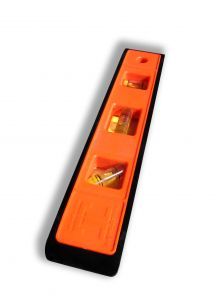If you think that hanging gutters yourself instead of hiring a contractor to do it will save you money, then more power to you. But don’t take this job lightly; improperly-hung gutters can cause numerous problems that will require more time and effort to fix. To help you get it done right the first time, let’s look at some advice provided by home improvement professionals concerning hanging gutters.

1. The Family Handyman: “It’s much easier to join sections on the ground than to work from the top of a ladder.”
Be sure to measure and plan out your project so you know how long your guttering runs will be.
2. This Old House: “Aluminum gutters and brackets can be spray-painted to match — or contrast with — the house trim.”
That’s right: your gutters don’t have to be pale yellow if you don’t want them to be.
3. DIY Network: “Make sure the string line is taut and is not caught anywhere, especially if it has to travel around a corner.”
This is referring to the line that you are placing in order to establish the proper slope of your gutters.
4. DoItYourself.com: “If your gutter run is 35 feet or less, the highest point of your run is going to be at one end, sloping downwards to the downspout… If the run is more than 35 feet in length, make the high point at the center of the run, with slopes leading to the downspouts on either side.”
The slope itself should be about a quarter inch for every ten feet of gutter length.

5. DIY Network: “Use an off-cut of gutter to guide you for a straight cut with a panel saw.”
If you need to cut a gutter section or two to fit your roofline, use a scrap piece of gutter, place it over the gutter so that straight edge is next to your cut line, and use the edge as a guide.
6. This Old House: “Rub soap on the lag screws so they’ll be easier to drive through fascia and into rafter tails.”
The last thing you need to be doing while perched up on a ladder is torquing a drill or screwdriver back and forth to drive it in further.
7. Ask the Builder: “Be sure the screws hit solid framing material behind the fascia board if you want the gutters to stay on your home.”
If you stop at the fascia, the gutters will start to sag as soon as the fascia gets wet or the gutters get overloaded with leaves and other debris.
8. DoItYourself.com: “If your corners don’t have a downspout and aren’t located at the end of the run, cover these joints with gutter covers.”
This will help keep water from leaking out over the outer edge of the gutters, which will prolong their life.
9. Ask the Builder: “[C]heck with your local building officials with respect to… runoff. Many cities have strict codes that address where this water must be piped.”
You don’t want to get cited by your city, county, or HOA, and then have to reposition your downspouts all over again.
10. The Family Handyman: “Since 10-ft. lengths of downspout are only crimped on one end, you’ll have to crimp one end of any cutoff piece to make it fit inside the next elbow or downspout section.”
Needle-nose pliers will do the trick, but purchasing an inexpensive crimping tool will save you time and effort.

See? You can hang gutters yourself. You don’t need to hire a professional, you just need to listen to one.
